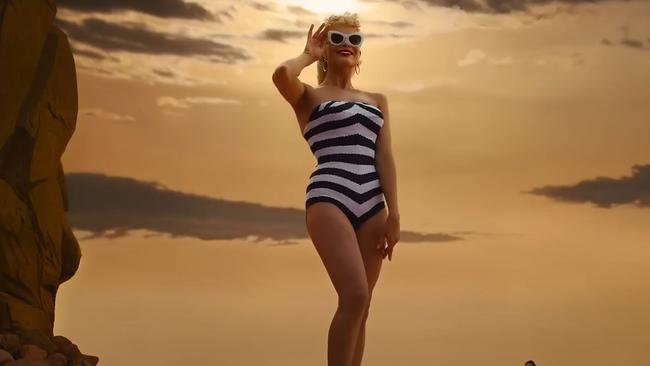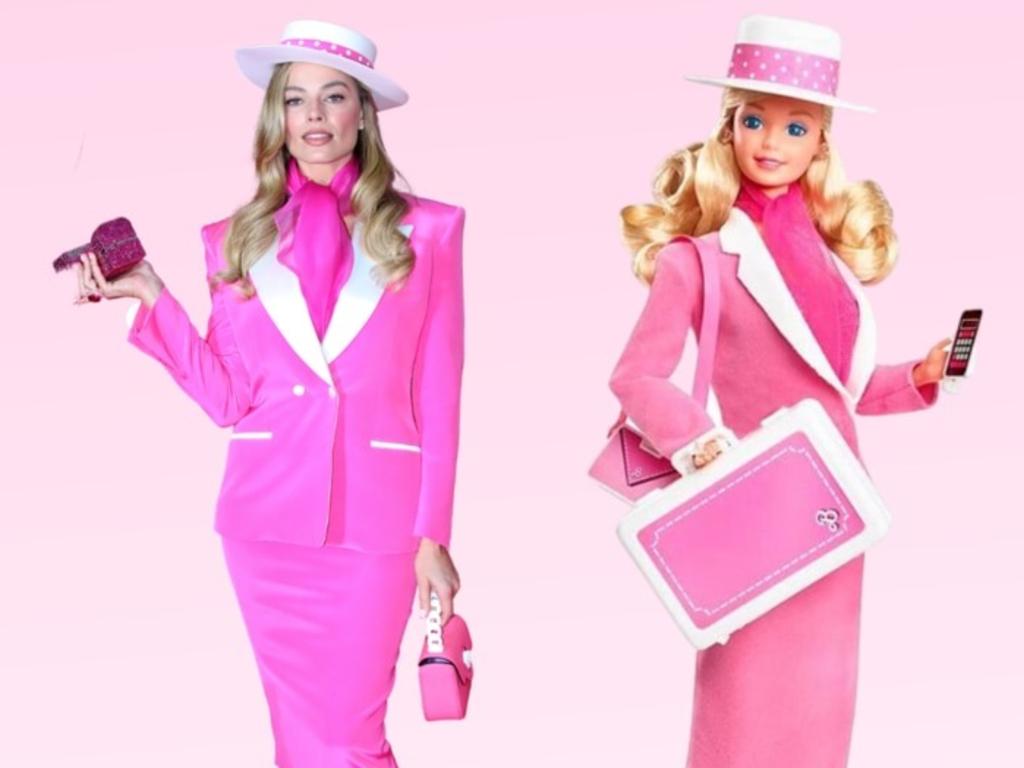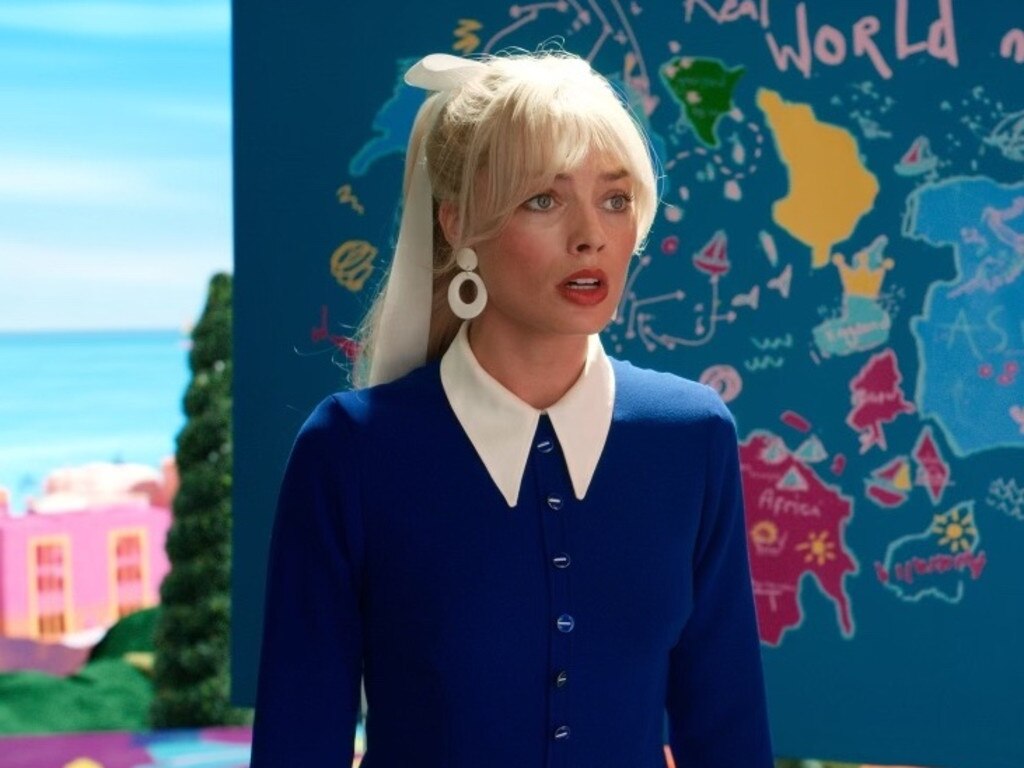Did Barbie start life as a sex doll?
While we all accept unthinkingly that Barbie is a toy for little girls, the doll that served as her inspiration was originally made for adults.

I was – I admit it – a Barbie girl. Growing up, I had a Barbie Dreamhouse (one sold globally every two minutes), a pink Barbie Corvette (an accessory she has driven since the 1970s) and a big box of Barbies: Tropical Barbie, Peaches ’n Cream Barbie, Malibu Barbie, Rocker Barbie, even Day-to-Night Barbie (a businesswoman but, you know, pink and sexy). I had ’em all, me and so many other little girls before and since.
According to Mattel, Barbie’s grateful manufacturer, three dolls are sold every second, meaning more than one billion of those 11.5 inches of idealised femininity have been sold since she first strode, knee-less, on to the scene in 1959. And interest is not waning: in 2021, Mattel made more than $1.6 billion in gross sales from the Barbie brand, up from $1.35 billion the year before. There was a small dip last year, with sales down to $1.49 billion. But with this summer’s Barbie movie coming out, that dip is guaranteed to be a blip.
It would be easy to be cynical about the film industry making nostalgia-milking-and-merch-heavy movies out of old toys and games, from Jumanji to Tetris, but the Barbie movie is unquestionably going to be a different beast. For a start, it’s directed and co-written by Greta Gerwig, once a key part of the ultra-cool, low-key indie movement known as mumblecore, now sharing neon-pink Barbie joy with the masses. Meanwhile Barbie and Ken are played by stratospheric A-listers Margot Robbie and Ryan Gosling.
But most telling of all has been the public’s reaction: the excitement over the unveiling of each new cast member, the online jokes about who else would be in it, the social media memes in which people put themselves into the Barbie poster.
As soon as the much-hyped trailer went online, a friend set up a WhatsApp group with 17 of us in it, titled “Barbie movie mums’ night out: Saturday July 22”.
Barbie herself may be fast approaching pensioner status, at age 64, but this is very clearly going to be her summer. Not bad for an old doll.
No other toy on the planet is as famous as Barbie. Mattel claims the brand has more than 99 per cent global awareness, and while it’s hard to imagine how on earth it calculated that, it is true that Barbie has become so familiar that we all accept unthinkingly that she is a toy for little girls, when she looks as though she was made for a very different demographic. With her pneumatic breasts, her accommodating arms and her orgasmically flexed toes, she looks – very obviously – like a miniature blow-up doll. And in fact her inspiration was originally made for adults.
According to one legend, Barbie was conceived when the US businesswoman Ruth Handler was on holiday in Switzerland in 1956 and spotted a doll called Bild Lilli, based on a sassy comic-strip character created for the German tabloid Bild. Like Barbie, Bild Lilli was small and sexy. Unlike Barbie, she was marketed to adults, especially men, as novelty gifts. But Handler realised that little girls might prefer these kind of toys to the baby dolls they were usually offered: instead of telling girls to play with make-believe versions of the babies they were expected to have one day, why not let them play with make-believe versions of their future selves? Handler and her husband, Elliot, just happened to be co-founders of Mattel, and so, three years after that Swiss holiday, Barbie – “Ponytail” Barbie, as the first doll was known – was born and became an instant hit. As Handler understood early on, men may like to look at images of beautiful women, but little girls do too. (Mattel also bought up all the patents and copyrights to Bild Lilli and she inevitably passed on to toy heaven in 1964.)

Ken joined Barbie in 1961, the dolls being named after the Handlers’ two children – who, one imagines, weren’t always grateful to their parents for giving their names to the most famous dolls in the world. Mattel only half-heartedly marketed him to boys because they knew he was just another Barbie accessory, like her car and her house, hence the Barbie movie’s tagline: “She’s everything. He’s just Ken.” This has become an internet meme, with people writing it beneath photos of celebrity couples in which the man is considered lesser, such as Serena Williams and Alexis Ohanian and Jennifer Lopez and Ben Affleck.
The only time Ken was a bestseller was in 1993, when Mattel, in an attempt to make him cool, accidentally made him gay, with its Earring Magic Ken. With his purple mesh top, peroxide hair and a necklace that multiple commentators compared to a cock ring, Earring Magic Ken was a huge hit with camp-loving men until Mattel swiftly stopped production, having realised it had inadvertently cast doubt over Barbie and Ken’s relationship.
Despite the famously smooth sexlessness of Barbie and Ken’s crotches, simulating sex between one’s dolls is often cited as a rite of passage for little girls, stripping off their clothes and banging their bodies together – like what adults do, right? (Not far off, actually.)
No doubt some children feel an erotic frisson from squishing their dolls together in the Dreamhouse but when I did it, I felt more akin to Ken and Barbie in the film trailer, when he suggests he stay over one night.
“To do what?” she asks.
“I’m actually not sure,” he replies.
It was funny to lie Ken on top of Barbie, but it was more fun to have them drive around in the Corvette.
For all of Barbie’s overt sexiness, there is a determined, even oblivious innocence to the Barbie brand, which has got it into trouble at times. Almost two decades before Earring Magic Ken, Mattel launched Growing Up Skipper, for when Barbie’s little sister hits puberty: “When you turn her arm, you can make her change instantly from a little girl to a tall, slender teenage doll”, cooed the 1975 advert. What this meant was when Skipper’s arm was cranked around, her waist expanded upwards and, most importantly, she grew breasts. Mattel belatedly realised it had created an even more obviously quasi-sex doll than Barbie was already and, perhaps more worryingly, was encouraging young girls to dislocate their shoulders in the pursuit of bigger breasts, and the doll was pulled off the shelves.
But even if some of us saw Barbie as sexless, we still definitely saw her body. Her emphatically adult breasts are a key part of her appeal for little girls. That she is so much bustier than the dolls who have followed in her wake – from Sindy to Bratz – is just one of the many reasons she is more popular than them. Even if little girls don’t quite get why breasts are sexy, or even what sex is, they know that they signify the grown-up world, and that’s why they’re exciting, along with ownership of a car and a house. Barbie lets little girls play grown-up.
She also does more than that. Barbie schools young girls in the impossible contradictions expected of women, with her pneumatic breasts but a vulva free of hair and blood and smells. Sexy but girlish, big-busted but thin, hoicked up in high heels but always smiling. Multiple studies have come to the extremely obvious conclusion that Barbie gives little girls a distorted perception of how their bodies should look.
Mattel is much more sensitive to this criticism than it was 60 years ago, when Slumber Party Barbie came with a miniature set of scales set permanently to 110lb (7st 12lb, 50kg) and a diet book that had only one piece of advice: “Don’t eat.”
Barbie’s waist has since been thickened – in 2016 Mattel introduced Barbie in a variety of sizes, from “petite” to “curvy”, although the BBC pointed out that Curvy Barbie would only be a UK size 8. For Barbie, the bonds of perfection can only be stretched so far. Probably the most memorable use of Barbie is in Todd Haynes’s cult 1987 documentary Superstar: The Karen Carpenter Story, in which he used Barbie dolls to act out the sad life of the singer killed by anorexia. The Karen Barbie grins away as she starves to death.
Ruth Handler originally said she invented Barbie to show girls that “a woman has choices”. At first those choices were mainly about what Barbie could wear, and it’s estimated she has had more than one billion – yes, billion – garments manufactured for her wardrobe since 1959. In the 1980s Barbie branched into the more yuppified job market than her previous careers of babysitter and surfer. Handler also made her own choices: in the early 1970s she and her husband left Mattel amid investigations into financial impropriety. As far as I know, there has never been a White Collar Crime Barbie.
The Barbie brand has also become much more diverse than it was in 1967, when Barbie got a new friend called “Colored Francie”. Since then, there have been Barbies of pretty much every ethnicity and, in 1997, seven years after the Americans with Disabilities Act (ADA) became law, the first disabled Barbie was manufactured: Share a Smile Becky, who used a wheelchair. Alas, Becky’s long hair frequently became entangled in her wheels and, just as bad, her chair didn’t fit in the lift in Barbie’s Dreamhouse. Despite that less than perfect start, Mattel has persisted in broadening its range of Barbies, and last year it announced it was bringing out a further range of Barbies with disabilities in its Fashionistas line, from a Barbie with a prosthetic leg to a Ken with the skin-pigment condition vitiligo.
“Knowing that kids’ early childhood experiences help shape how they perceive the world, we are dedicated to reflecting a multidimensional view of beauty and fashion in our dolls,” Lisa McKnight, global head of Barbie and dolls at Mattel, said at the time. (Needless to say, all the Barbies with disabilities are pretty and perky. Barbie with a hearing aid? Yes. Barbie with a double chin and dark under-eye circles? No.)
Without question, Mattel’s canniness in introducing new kinds of Barbies has helped her to live decades longer than the average toy’s lifespan. But Barbie’s customers – the little girls – are pretty traditional in their tastes. Never mind Barbie with glasses, Forbes reports that in 2008 little girls could barely be persuaded to buy Barbies with brown hair: four out of every five sold were blonde. Having said that, Mattel reported in 2020 that its Barbie with vitiligo was one of the top 10 Fashionista Barbies of all time.

But ultimately Barbie is like the Disney princess, an unshakeably enduring childhood fantasy that is impervious to feminism and reality, the ultra-processed food of children’s toys that creates an insatiable appetite for more. Arguments about whether she teaches girls how women should look, or whether girls are instinctively drawn to blonde and pretty representations of femininity, are chicken-and-egg arguments. Or rather, they’re irrelevant, because both statements are true. Barbie doesn’t really change because little girls don’t want her to, even if she’s not very good for them.
Like Disney, Barbie has a glossy perfection that appeals to children and also to those who appreciate camp and kitsch. One of Andy Warhol’s last paintings was Barbie, Portrait of BillyBoy*. A US socialite, BillyBoy was such an avid collector of Barbie dolls that when Warhol offered to paint him, he asked that he do so as Barbie. It’s this side of Barbie – the neon-coloured, camp-inflected, paradoxically perfect side – that Gerwig’s film will likely mine. It’s often how adults portray Barbie – Aqua, the Danish-Norwegian Europop group, did it in 1997 with their song Barbie Girl, which Mattel at first hated but has since come round to.
For us former Barbie girls, we know the real excitement of the doll was the access she seemed to give us to adulthood, with her bikini and her boyfriend and her breasts. And if the real world hasn’t always lived up to the promises of Barbie world, well, that’s not Barbie’s fault. Reality is tough, but life in plastic? It’s fantastic.





To join the conversation, please log in. Don't have an account? Register
Join the conversation, you are commenting as Logout